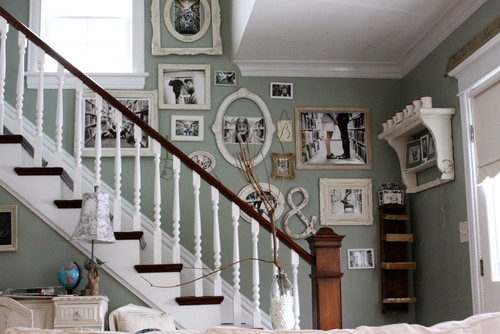Have you ever gone to Home Depot and looked at flooring options? There are hundreds of options for carpet, hundreds of options for tile and could it be hundreds of options for wood? Who would have thought there could be so many options for wood floors? Hardwood, Engineered wood, Laminate, plank, strip, species, snap together, plank width, nail or glue installation?

Oh my goodness, how do you decide what is right for you and your home? Well, to understand why there are so many options you need to know the different types and what they have to offer.
Since I am looking to purchase wood floors for my office and the kid’s playroom I decided to start doing some more intense searching of the products out there.
Welcome to wood floors 101!
When deciding on wood flooring you need to consider several things:
1. Do you intend to stay in the home for a long time?
2. Do you have children and pets?
3. Will you ever decide to rent your home?
4. How much money are you willing to invest?
5. Will you install it yourself or hire an installer?
6. What rooms in your home do you want to install wood floors?
Here is a short description of Hardwood, Engineered Wood and Laminate to help you make the right decision based on these questions.
Solid wood/Hardware flooring Hardwood floors are incredibly beautiful and create a timeless classic feel in a home. They can last many years when taken care of properly and they can be refinished or sanded and stained multiple times, depending on the species of wood and the condition of the floor.

Hardwoods can be installed in bedrooms and common spaces, such as living rooms, dining rooms and kitchen. Basements and bathrooms are not ideal rooms to install hardwoods because the space tends to be damper and more humid than traditional spaces.
Wood floors are an investment in your home as the cost is higher than laminate, but you can increase the value of your home by choosing wood over laminate. If you have a higher end home, buyers might expect hard wood floors instead of laminate.

There are many advantages of installing hardwood floors. You can purchase pre-finished floors in the species – oak, pine, maple, walnut, cherry, bamboo, to name a few – and stain of your choosing, or you can choose unfinished floors that are installed and then stained on site with a custom stain. Hardwood must be nailed to a wooden sub-floor. Unlike the other wood flooring options, it cannot be installed straight on concrete or on top of your existing floor. Because of the nail-down requirement, it is recommended that you hire hardwood floor installers. If you wish, though, it is possible to rent floor staplers from home improvement centers. This alone makes hardwood the most expensive and time consuming option.
Engineered wood Engineered wood flooring is an exciting alternative to solid hardwood flooring. It is typically less expensive than solid hardwood, but it’s designed to be very stable and durable. Instead of a single piece of wood, it is basically a sandwich of finish wood veneer on top and alternating grains of plywood. The finish wood is what you see and walk on. The plywood underneath comprises 80-90% of the floor. This makes it strong, dense and resistant to warping. It’s a good overall choice and also a viable wood option for areas like basements or kitchens where hardwoods are not appropriate.

It can be installed a number of ways as well. Engineered wood can be stapled or nailed in place like solid hardwood. It also can be glued in place or manufactured with click and lock construction. It usually can’t withstand refinishing more than once or twice due to the top layer being too thin. Before you fall in love with engineered floors, keep in mind that they can only be sanded once or twice, and deep scratches in the wood that reach the plywood layer cannot be sanded and refinished.
 Laminate Floors.
Laminate Floors. A laminate floor isn’t exactly wood at all, although it looks similar. It’s comprised of two layers – a top layer that is a sealed photograph of real wood applied to a composite layer underneath. A good laminate can look like the real thing when it is installed properly. Since the material is synthetic it tends to be more durable, scratch resistant and holds up under high traffic, children and pets better than wood floors.

Laminate floors can be cleaned with a damp rag, unlike the wood floor counterpart that needs to be polished. Many synthetic floors come with at least a ten year warranty against dents and warping, however laminate floors cannot be refinished if they become scratched.
Laminate flooring is the least expensive option for getting a “wood” look on a tight budget and can be installed in moist environments like bathrooms and kitchens. Newer laminates are much more resistant to moisture than older styles that were often criticized for swelling and bubbling problems.
Although laminate floors are easier on your wallet they tend to have a lower resale value than real wood floors and tend to be a little harder to walk on. But let’s not forget that they are ridiculously easy to install and less expensive. Who doesn’t love that?
Remember, the flooring you select will be with you for a long time to come. It can turn a drab room into a formal and elegant room or make it more cozy. It all depends on the species, stain and finish of the wood you choose. Wood floors are a beautiful addition to your home and I can't wait to decide which wood I am going to use! So, choose wisely and take all things I've taught you today into consideration!
I hope my first installment of a 101 post was fun and educational! Keep checking for more 101 posts and have a great weekend!

































